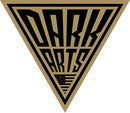Testimony: The "Dark" side of surf OCD
My first introduction to Dark Arts technology came from a friend at a local reef break around five minutes from my house. We were surfing a spot where catching a wave involved paddling over, or at least near, a coral head that would form a small little pocket. Starting as a boil before turning into a knee high turquoise stair-step you had to stand and bottom turn quickly, before entering into a longer wall section that would reform again on the inside. A fun wave with a high ding-risk, but not anything too spectacular. Steven wouldn’t stop talking about his new Dark Arts Pyzel Ghost. Dropping without worry and snagging a large portion of the waves on tap, I grew interested in his lava-black rounded pin tail. Questioning how it was working for him-- despite preemptively knowing the response I would receive, he cheerfully answered that it was nothing short of “the best board ever” and then to my surprise he offered to let me try it. Wondering where such goodwill originated I questioned his generosity. “It’s going to be really hard to break it.” he responded.
Suspecting hyperbole while swapping leashes in between sets I had my first vacuum-bagged carbon initiation. I floated a little more. Pumping down the line felt like twice the speed of my PU board. The acceleration coming out of top turns and rebounding from cutbacks was all together unlike anything I had ever ridden. I was making sections I normally wouldn't and ending each wave inches from the sidewalk of reef; I understood why Steven was so happy. After about three waves, I reluctantly switched back, but never forgot those first few waves on the carbon fiber Pyzel Ghost.
A creature of habit, I like the same things over and over again to the point of exhaustion. OCD, as some would classify it - the same parking spot at work, the same lunch prepped the same way everyday. My surfing falls victim to this as well; despite many surfboards tucked away inconspicuously around my ohana I rarely stray from my go-to everyday shortboard from knee high to overhead. There are of course deviations on the big winter day where stepping up is necessary and adding a few inches goes a long way in getting over the lip.
Reminiscing my first time trying a Dark Arts, I knew that getting one would likely concrete my surf-ocd into oblivion, likely past a threshold of recovery. Riding day-in and day-out with no reason to switch, and no sacrifice in resilience after the new-board period, I can confirm that my desire to try anything new has faded even further into oblivion. I should really start selling off the quiver-dust-collectors and make room before my partner starts questioning the status of my sanity.
I got the JT Variant. A board designed for a diverse array of conditions. The soft nose-forward rails take shape and harden out the back transforming into a pulled-in and performance oriented swallowtail perfect for the generally small yet punchy reef sections of the Big Island. Sizing down an entire liter from my typical PU shortboard I was able to eliminate two inches in length while maintaining the same float. This allows for ease of entry into the super tight pockets that litter the Westside. Paddling into the peak, I feel like I have about an extra half-second to feel the wave pick me up ultimately allowing me more control during the takeoff. Once standing, the board feels dynamic- snaps off the top, chop hops, and pumping through sections are not only easier, but albeit a lot more exciting with a substantial amount of speed; almost like surfing a coiled spring. Mediocre sessions in waist high suburban-spots are far more exciting and with the added pop from carbon, I can drop deeper, get more drive off my bottom turn and make sections I normally wouldn’t. This means, I can ultimately catch far more waves on any given session in even ultra-crowded conditions.
Considering the geography of where I surf, on Hawai’i Island, the experience can be defined as inherently endemic. Shoaling schools of yellow tang and trigger fish meander between the undulating reef canyons beneath the lineup. Different from the other islands of O’ahu, Maui and Kauai, the reef is younger here. Tube coral is a prime example of how sharp the reef can get- even cutting through springsuits occasionally. Care must be taken in surfing most spots on the Westside since most good waves here break on very shallow reefs. Shallow that is to the point where tales of the occasional Davy-Jones-scalping are not uncommon. Surfing at low tide means exposed coral-heads will greet you as you make your way down the line. Entry and exit points can also be quite elaborately exciting: “Is this the last day for my fin box?” you may question as you paddle several yards across ten inches of water that occasionally drops to four.
After a while, everyone makes due with dings, duct tape and cheap uv-cure resin. However, with a Dark Arts, I find myself not sweating the coral heads as much, and mindful end-section floaters do not end in blown fin boxes. I am more than stoked on the JT Variant, and the Dark Arts tech. Now the right of passage has transferred to me, as my friends all cheerfully try my new Dark Arts board, and leave me sitting behind them at the peak watching them surf something altogether new and better. The best part, after about three waves, I get it back and get to surf the carbon board for the rest of the session once again remembering how I felt trying the carbon-wrapped Ghost for the first time.







Leave a comment